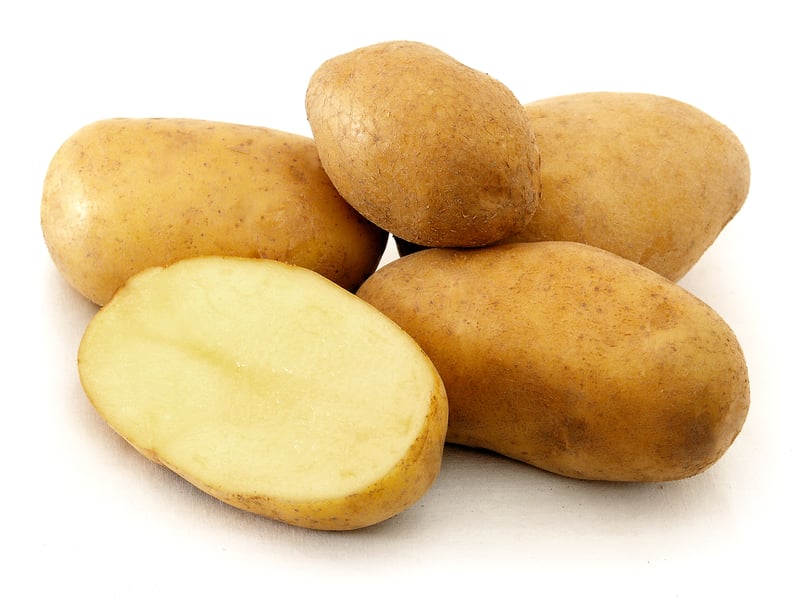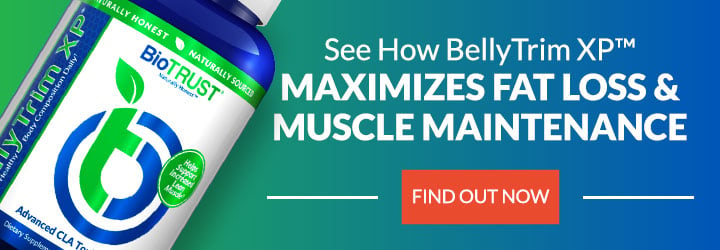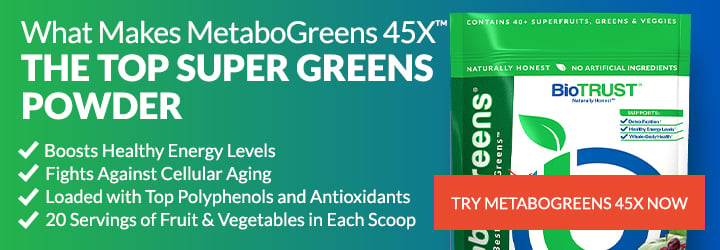The Top 6 White Foods for a Flat Belly

I’ll admit it, I have a tendency to be a little nosey. **Elbow poke from my wife** Okay, a lot nosey, especially when it comes to people’s conversations pertaining to health and fitness.
Instinctively, my ears perk up when I hear others giving advice on nutrition and exercise. You see, I’m always game for a chance to learn, and it’s great to step outside my little box to stay on top of what’s popular and trending. Having said that, it never ceases to amaze me to hear the diet and exercise misguidance that pervades.
For instance, I’m sitting on an airplane right now, and I couldn’t help but overhear a couple folks sitting in front of me talk about weight loss. In one corner, we have the know-it-all expert (in case you’re wondering, that’s not me). And in the other corner, we have the frustrated and confused, albeit chronic, dieter.
The former expert went on to give the desperate dieter—hungry for virtually everything, including any advice—some “rules” she should follow, including: “Avoid all white foods.” **Face palm**
I get the idea of simplifying things and trying to keep them black and white, but nutrition just doesn’t work that way. And I get that this white foods “rule” is born out of good intention. As a whole, people eat way too many processed foods, which are jam-packed with highly refined carbohydrates (e.g., “white” flour) and added sugar.
And while it’s a darn good idea to limit your intake of these processed, packaged “foods,” if you stick to this “rule,” you’ll be missing out on several white foods that can—and arguably should—be included as part of an overall healthy diet. Let me give you some examples.
6 White Foods For a Flat Belly
1. Potatoes I say, “Potato,” you say, “What?!” Surely potatoes are a “white” food you should avoid, right? Not so fast. Of course, I’m talking about the humble ol’ spud—which is packed with vitamins and minerals—not deep-fried or loaded baked potatoes. Research has shown that potatoes are among the most satiating foods, leaving you feeling full and satisfied. What’s more, raw potatoes and potatoes that have been cooked and then cooled contain a very unique type of carbohydrate called resistant starch (RS), which has been shown to boost metabolism, decrease appetite, enhance weight loss, improve insulin sensitivity, and more!
2. Greek Yogurt Greek yogurt is a high-quality source of protein, and it’s widely accepted that higher-protein diets are markedly effective for appetite and waistline management. What’s more, numerous studies have shown an inverse association between dairy intake and belly fat. Even more interesting—and perhaps counterintuitive—is that recent research has shown a high intake of dairy fat (e.g., full-fat milk and yogurt) is associated with less belly fat. It’s best to choose Greek yogurt from organic, pasture-raised animals when possible. It typically means more healthy fats (e.g., omega-3s, CLA), and it comes from healthy, happy cows that haven’t been treated with synthetic growth hormones or antibiotics.
3. Coconut Oil Depending on whom you’re talking with, you may have been swayed to believe that coconut oil is not healthy. While it may not deserve to be crowned king of superfoods, I wouldn’t go as far as saying it’s not healthy. In fact, including coconut oil as part of an overall healthy diet may have numerous benefits. For instance, coconut oil may support weight management by boosting metabolism and promoting appetite control. And, coconut oil provides antioxidant, antimicrobial, anti-aging, and heart health benefits among others.
4. Bananas Potatoes first, now bananas? You must think I’ve fallen off my rocker. Bananas are loaded with sugar, right? True, added sugar is one of the “white” foods you’re best off limiting, but here’s a news flash: Eating too many bananas is not the cause of the dramatic rise in obesity, type 2 diabetes, and cardiovascular disease. The truth is that bananas contain a variety of nutrients, and they’re loaded with antioxidants, including melatonin, the same compound that’s responsible for regulating circadian rhythms. Even better, green unripe bananas are one of the best sources of RS or resistant starch, which has been referred to as “the weight loss wonder food.”
5. Cauliflower Move over kale, there’s a new superfood in town. When it comes to nutrition, cauliflower’s got it going on! Cauliflower is an excellent source of vitamin K, vitamin C, and several B vitamins, which are important for optimal brain health and memory. Besides being a potent antioxidant, vitamin C has been shown in some research to provide skin anti-aging effects, help repair damaged, photoaged skin, and even provide wrinkle relief. In addition, cauliflower is loaded with phytonutrients including indole-3-carbinol, which may help promote healthy estrogen balance, and glucosinolates, which may help improve carbohydrate tolerance and fat metabolism.
6. Onions While the Egyptians worshipped the onion’s many layers as a symbol of eternity, researchers are beginning to laud this member of the Allium family for its cardiovascular benefits, which include reducing blood pressure, lowering blood cholesterol levels, and improving glycemic control (thanks, in part, to quercetin). What’s more, onions contain fructans (e.g., inulin), a type of prebiotic fiber, which serves as “food” for healthy gut bacteria. Like RS, fermentation of prebiotic fiber leads to the production of short-chain fatty acids (SCFAs), which fuel the immune system, stimulate the release of satiety hormones, and help protect the brain.
So there you have it, friends: White foods you shouldn’t avoid.







